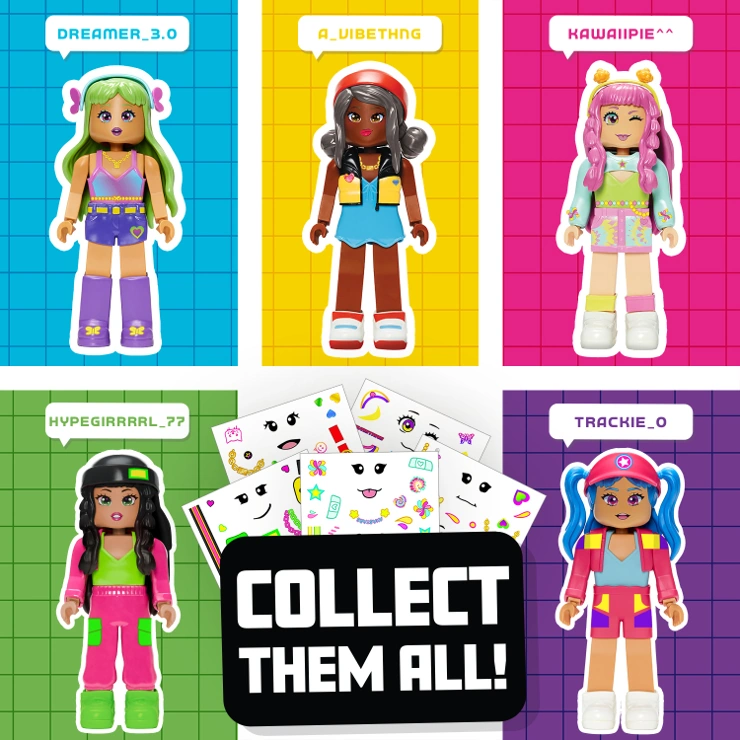WowWee v. Roblox: The Limits of Protecting the Blocky Humanoid

Aaron Stone
Published August 8, 2025 • Updated August 8, 2025
Share Article
This article is for informational and commentary purposes only and does not constitute legal advice.
Roblox’s confidential settlement with WowWee over the My Avastars dolls leaves one central question unresolved: can any company actually own the right to a blocky, humanoid avatar? Both sides walked away without a clear legal victory, and the law remains unsettled on whether reducing a human figure to rectangles and a cylinder is protectable intellectual property.

The dispute began in 2022, when Roblox sued WowWee claiming that its My Avastars dolls copied Roblox’s 'classic' blocky avatars — rectangular torsos and limbs, cylindrical heads — alleging infringement of both copyright (for four registered avatars) and trade dress. Roblox argued that the combination of shapes and stylized features was more than functional: it was a creative, protectable expression. Roblox also said WowWee’s use of Roblox codes and branding would cause consumer confusion.
WowWee, for its part, argued that Roblox’s avatars were similar to those of other toys — explicitly referencing LEGO minifigures — and therefore, any copyright protection for these features should be 'thin' at best. The implication was that such basic block-like features are not unique to Roblox, and that the law should not allow a monopoly over a style that has existed in the toy industry for decades.
Viewed more broadly, the reason blocky, segmented humanoid forms recur in toys and digital avatars is not accidental. The human body, when reduced to its simplest visual form for play or animation, naturally divides into block-like segments: one head, a torso, two arms, and two legs — the classic six-part rig familiar from children's drawings. More advanced rigs like Roblox’s fifteen-part 'R15' break these limbs down further at the elbows, knees, and so on. This segmentation is dictated by the logic of anatomy and the practical need for modularity and easy rigging, not creative expression.
Before the parties settled, the court made several key rulings that sharply limited Roblox’s case:
- Copyright claims were only allowed for the four avatars that were properly registered before suit; all other copyright claims, and claims over the generic blocky 'avatar bases,' were dismissed as functional and unregistered.
- Trade dress and trademark claims could go forward, but the judge made clear that Roblox faced a high bar due to the long-standing prevalence of blocky avatars in toys and digital platforms.
At the core, the legal fight was about whether a company can claim intellectual property rights over the basic blocky humanoid form — a design used for decades in toys as a technical and ergonomic default. Roblox staked its case on the distinctiveness of its specific combination of features. But realistically, courts are highly unlikely to find the segmentation of a human form into blocks, cylinders, or similar shapes — done for reasons of anatomy, modularity, or mechanical simplicity — to be protectable. Only specific details, such as exact proportions, corner radii, facial stylization, or accessories, might qualify as creative expression.
"Trademark law should not be used to perpetuate monopoly rights in a functional product feature." — Supreme Court of Canada, Kirkbi AG v. Ritvik Holdings Inc. (2005)

This unresolved status has consequences far beyond the parties: for developers, toy manufacturers, and user-generated content platforms, it means that the blocky humanoid remains a legal gray area. No US court has yet ruled on the degree to which basic building-block figures are protectable IP, and anyone copying a generic block person is still operating in untested waters.
In the end, neither side got a courtroom answer. The case ended in a confidential settlement, with both sides paying their own legal fees and no admission of wrongdoing. No court or jury ever ruled on whether a block-shaped avatar is protectable IP. For Roblox, the dream of a broad monopoly is out of reach, but so is a negative precedent that would open the floodgates for copycats. For WowWee and other creators, the practical takeaway is clear: don’t copy branding, don’t create consumer confusion, and the basic blocky silhouette remains fair game.
Until a court directly addresses the question, the legal status of modular blocky avatars like Roblox’s R6 or R15 models remains unresolved.
This article is not legal advice. Consult a qualified attorney for advice specific to your situation.
Share Article